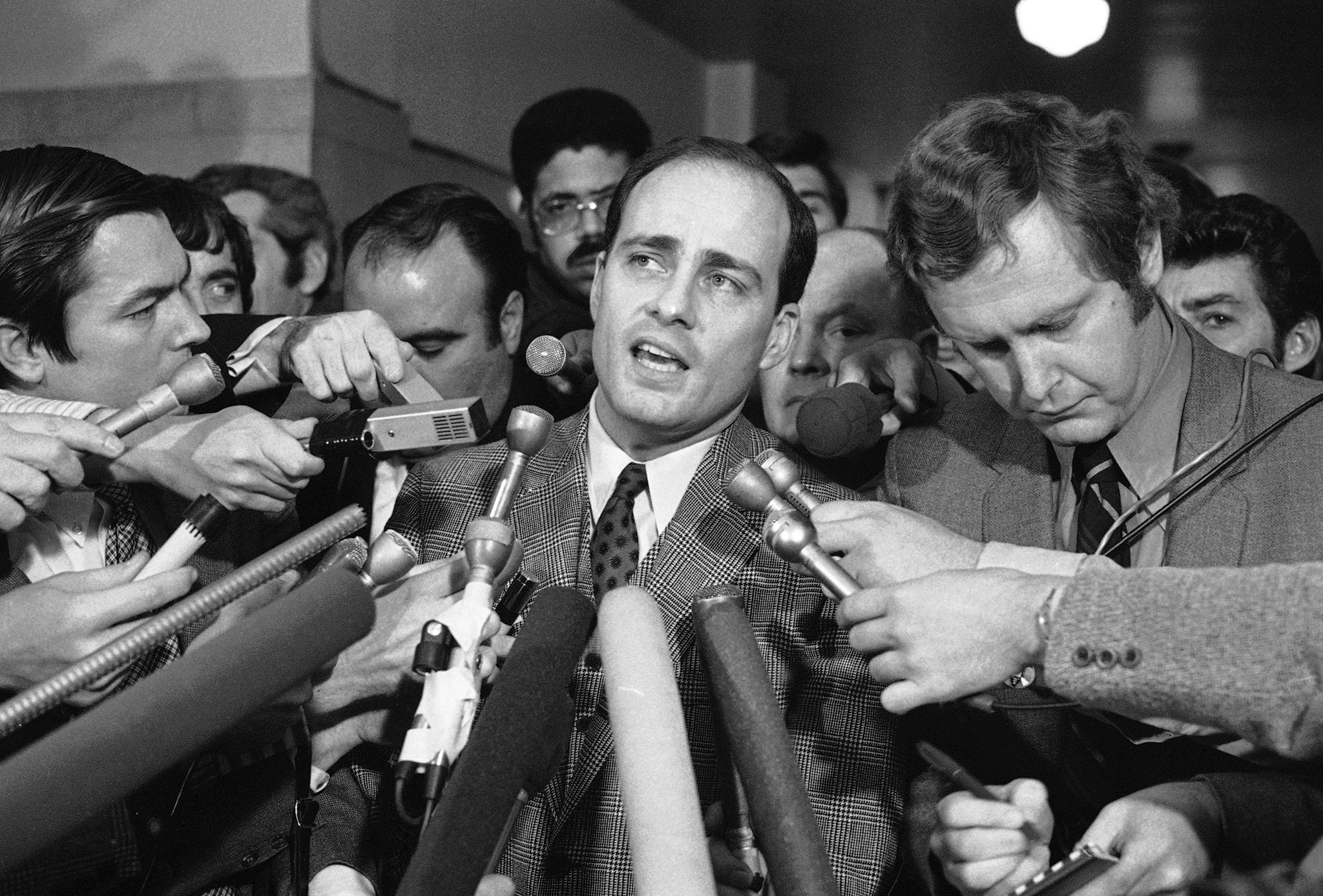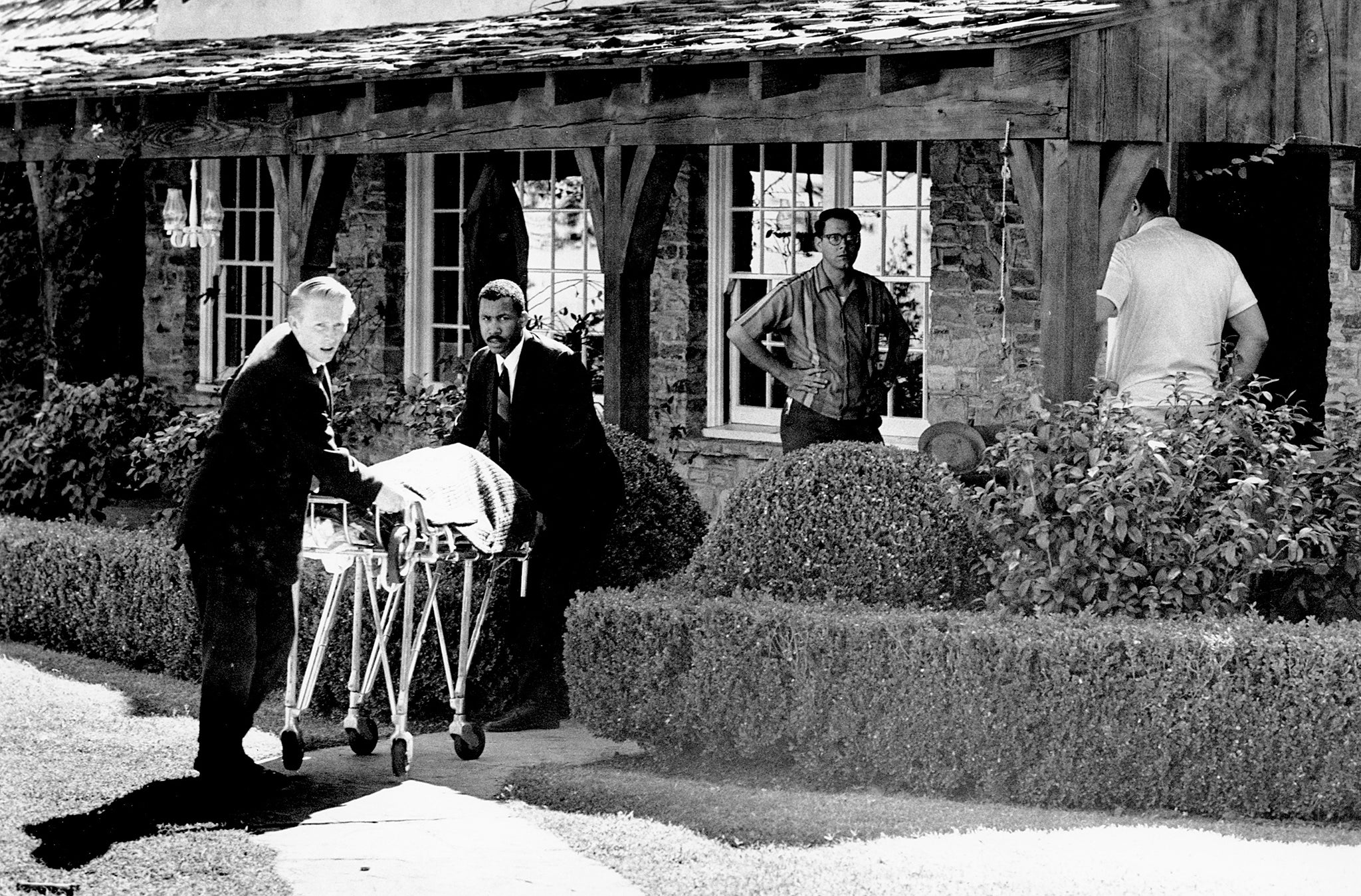
The Manson family-murder rampage of 1969 claimed seven victims, most famously Sharon Tate, the Hollywood flower child whose tragic story is told yet again in Quentin Tarantino’s new film, Once Upon a Time ... in Hollywood. But the murders also altered countless other lives. Consider Tom O’Neill, an entertainment journalist, who in 1999 accepted a three-month assignment from Premiere magazine to write about how the murders changed Hollywood.
He missed that deadline – by 20 years.
As the article grew into an obsession, O’Neill tracked down enough faded Hollywood luminaries, intelligence operatives, mobsters, drug traffickers and former cult members to, well, fill a Tarantino movie. Along the way, he came to doubt the accepted narrative of the case as presented by Helter Skelter, the 1974 book by Vincent Bugliosi, the lead prosecutor in the case, that Charles Manson was deluded by messianic visions and ordered his drug-addled minions to slaughter rich Los Angeles denizens to spur an apocalyptic race war.
At last, the book has arrived, just in time for the release of the Tarantino film. Chaos: Charles Manson, the CIA, and the Secret History of the Sixties, which O’Neill wrote with Dan Piepenbring, is less a definitive account of the murders than a kaleidoscope swirl of weird discoveries and mind-bending hypotheticals that reads like Raymond Chandler after a tab of acid.
Were the murders about a drug burn? A mob hit? Or was Manson a pawn for government agents? O’Neill shares what he found after two decades.
What did you learn about the Manson murders that might surprise us?
We’ve spent the past 50 years thinking the murders were all about sparking a race war. But after 20 years, I found an endless number of holes in that story. The Manson family intersected with a multitude of shady characters at so many levels – law enforcement, drug trafficking, even the government, all wiped from the record – that I found good reason to doubt that the Helter Skelter motive was the full story, or even the real story.
Vincent Bugliosi has been portrayed as a hero who saved Los Angeles from a crazed hippie death cult. What did you find?
I thought he was going to be the protagonist of my story. But then when I started interviewing people who worked with Bugliosi in the DA’s office, and the cops, the majority of them didn’t trust him.

I found plenty of documentary evidence that Bugliosi procured false testimony, withheld evidence, and covered up information during the trial, and that law enforcement knew a lot more about the family’s potential for violence even before the murders.
Are you suggesting that Bugliosi twisted the truth to get a conviction?
Bugliosi needed the Helter Skelter motive to convict Manson of conspiracy. But I believe he exaggerated what one of the cops told me was nothing more than a philosophy of the group into a reason for the murders because it was much more sensational. And Vince knew winning a conviction on that would be his ticket to fame and fortune.
What were some of the bizarre, inexplicable things you found?
Just a week after the murders, the Los Angeles Sheriff’s department raided the Spahn Ranch, the old movie ranch where the Manson family was living. Manson, who was a federal parolee, was arrested with 32 followers, including minors.

Despite the fact the officers found stolen cars, firearms including a machine gun, and stolen credit cards in Manson’s pocket, the entire group was released three days later without charges, supposedly because the arrest warrant had been misdated. I found the warrant in the Sheriff’s Office files, and interviewed the sergeant who wrote it. It wasn’t misdated. Manson’s parole should’ve immediately been revoked. It wasn’t.
Why not?
What it suggests is that someone wanted him out. Maybe that he was a source for someone in law enforcement.
The idea that the Manson family was trafficking drugs in Hollywood doesn’t seem wildly far-fetched. But what’s with the CIA reference in the book’s title?
It may sound like a crazy conspiracy theory but I discovered a lot of evidence that right after Manson was released from prison in 1967, he was spending a lot of time in the same medical clinic in San Francisco where it has been documented that a CIA employee was recruiting subjects for studies of LSD and its ability to influence human behaviour.

Coincidental or not, Manson suddenly transformed from a harmless little ex-con who nobody ever gave a second glance, to an all-powerful guru surrounded by a harem of women who would do anything he asked, including kill complete strangers.
OK, Manson as a Manchurian candidate. That’s pretty crazy.
I had never believed in conspiracies. But it is a documented fact that the CIA had a programme called Chaos, and the FBI had one called Cointelpro. The objectives of both of those at-the-time secret operations were to destabilise the left-wing movement and make hippies appear dangerous. And if this was a government operation, then boy did they succeed. Suddenly, everybody looked at anyone with long hair and a beard as a possible Charlie Manson.
But Manson was completely insane, right?
Manson wasn’t necessarily crazy. Or at least, he was never officially diagnosed. I interviewed him two or three times on the phone. I heard all of Manson’s verbal gymnastics – speaking in riddles, not making any sense.

But then I heard recordings that a prisoner named Gray Wolf, who handled publicity for him, made a few minutes after we got off the phone. Manson had completely transitioned. He was making sense, speaking in complete sentences. He sounded like he could have been a paralegal. Just hearing that tape showed that everything he did, with me at least, was an act.
For all the wild hypotheticals you explore, none of them implicate the Manson family’s most famous victim, Sharon Tate.

Sharon’s mother, Doris Tate, went to her grave saying that she had information that the killers didn’t think that Sharon was going to be at the house that night. And every single person I interviewed who knew her had good things to say about her. You see how Margot Robbie plays her in the trailers for the Tarantino movie, and that’s exactly how she was described to me: she was like this beam of light, that was all innocence and beauty and sweetness.
You write about the threats and lawsuits you encountered along the way. Was this story worth two decades of your life?
I was missing weddings, and even funerals. But I always kept thinking that I was weeks or months away from finishing and that I had to keep going. There were paralysing moments of reporting one angle for weeks, months, a year, and then all of a sudden saying: “This was all a dead end! How did I let this happen to myself?”
Any advice for other reporters who want to pick up the story where you left off?
Just move on. Don’t make the same mistake I did.
Chaos is published by Penguin and is out now
© New York Times







